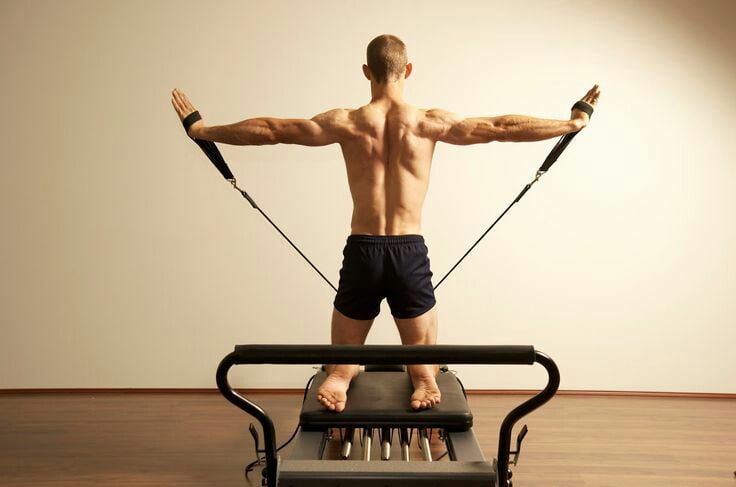BY: WADE WALLACE: CYCLING TIPS MAGAZINE
Core conditioning and stretching are boring topics. When I’m flipping through cycling magazines those are the first articles I skip over. They don’t have that immediate effect on our cycling performance that we’re looking for. I’d rather read about 6 simple shortcuts to time trial like Cancellara. This is what I thought for most of my life up until now.
Like many people I didn’t understand what it was all about. I assumed it was going to be a bunch of old ladies doing a bunch of stretching, chanting and holding hands. Not so…and my muscles are in agony at this moment as proof.
Pilates is all about strength and flexibility of the body by focusing on the core muscle groups. As cyclists we tend to have highly developed legs, but don’t pay much attention to upper body muscular conditioning. Most of us think of “upper body conditioning” as weight lifting and adding unwanted bulk. Pilates doesn’t do this. After a year of Pilates I can see my body changing shape. I’m longer, leaner and my abs look (almost) like they did when I was 18.
What does a strong core do for cyclists anyway?
Core strength will help transfer more power to the pedals by providing a solid platform for the lower body to push against. Riding with a weak core can be compared to putting a Porsche engine inside a Hyundai chassis. You can have all the power in the world but with a weak chassis the power will dissipate elsewhere.
Pilates exercises are targeted to develop strength in the deep intrinsic muscles of the abdomen and spine, taking pressure off the superficial muscles and promoting more balanced and efficient use. This kind of inner strength training, along with Pilates’ focus on alignment and torso stability will support you as a cyclist through those long rides.
The key to Pilates is that each movement requires proper alignment of the pelvis, which in turn requires subtle torso movements that help strengthen the core body muscles important to cycling: transverse abdominis, rectus abdominis, external and internal oblique and erector spinae. Additional benefits include improved muscle flexibility, posture, and balance. No, not as exciting as having a sprint like Renshaw or Cavendish, but important stuff.
Pilates is an excellent way for cyclists to acquire more core strength which helps support the lower back. Many riders complain about lower back pain and this is the first area that fatigues on a long ride or time trial. Because of a cyclist’s position they usually have quite rounded shoulders.
Have you noticed the body language of a tired cyclist? The chest drops so that the neck has to bend unnaturally to hold the head up, and all the weight falls into the front of the arms, the deltoids, biceps and forearms.
Pilates also helps you become more self aware about what each part of your body is doing — on and off the bike. This awareness allows you to correct the things that will increase your speed and power and enjoyment on the bike.
When can I fit Pilates into my already hectic training schedule?
Personally I use the days when I’m taking a day off the bike for Pilates. It provides a great low-impact workout, isn’t overly exhausting, and has some great stretching built into the sessions. It only takes an hour.
On the list of things that I wish I had done from the beginning of my cycling, Pilates and core training are two of those things that I’m now only beginning to understand the importance of.
